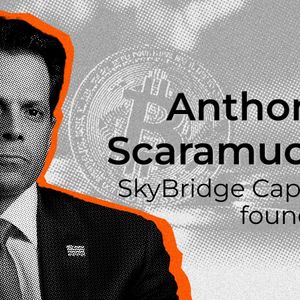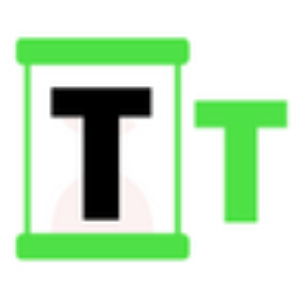BlockDAG a Scam? Why This Analyst Claims BlockDAG Is Faking Its Raise
4 min read
BlockDAG claims to be the next big Layer-1 blockchain, boasting nearly $300 million raised and major brand partnerships. But growing doubts suggest the project may be more hype than substance—anonymous team, recycled whitepaper, and no on-chain proof. Meanwhile, XYZVerse quietly offers what BlockDAG lacks: audits, KYC, real utility, and transparent fundraising. Here’s why investors are starting to question the noise—and look elsewhere. Is BlockDAG Faking Its $300M Presale? BlockDAG has captured crypto headlines with a presale claiming nearly $300 million in funds—yet many in the space now question whether that number is real or simply inflated marketing. Positioned as a hybrid Proof‑of‑Work/DAG Layer 1 with EVM compatibility, audits from Halborn and CertiK, and partnerships from Inter Milan to NBA hints, its hype is growing. But skeptics argue that behind the noise lies little transparent substance. The red flags are troubling: A seeming mismatch between big advertising budgets and minimal GitHub activity. Repositories are near-empty, and real infrastructure progress is hard to track. Elements of the whitepaper appear nearly identical to Kaspa’s, hinting at recycled documentation rather than true innovation. Surge of impersonator and scam presale sites, which security experts say can drain wallets upon connection. Reddit users have also sounded the horn. One wrote: “No legit company forces you to pay a ‘fee’ or ‘taxes’ to withdraw money. That’s just a scam to suck more money out of you.” Source: https://www.reddit.com Another observed that: Source: https://www.reddit.com These comments suggest that much of the presale’s claimed funding may be hype-fueled rather than backed by real investor capital. By contrast, XYZVerse (XYZ)—a sports-themed presale—has amassed around $14 million, completed smart contract audits, passed KYC, and tied itself to a working dApp ecosystem like bookmaker.XYZ, along with clear tokenomics and burn schedules. That presale feels far more grounded and transparent than BlockDAG’s, despite commanding a much smaller scale. Still, BlockDAG has some checkboxes ticked: audit reports, a testnet, and hardware prototypes. Supporters highlight these as signs of a serious project. But without public on-chain fundraising proof, live token listings, or reusable code, investors remain rightly cautious. BlockDAG isn’t proven to be a scam, but its massive presale raise is unverified and the project appears to lean heavily on marketing. Until we see active code, token launches, and on-chain funding, it’s a speculative gamble at best. For a more credible presale example on a much smaller scale, look to XYZVerse—with its completed audit, real ecosystem integration, and orderly tokenomics, it reads far more transparently. Why XYZVerse Feels Safer and More Transparent Than BlockDAG In the crowded and often chaotic world of crypto presales, XYZVerse stands out as a rare example of a project that actually delivers transparency, security, and real utility—something that BlockDAG, despite its massive marketing push, consistently fails to prove. Let’s start with verifiable trust. XYZVerse has completed full KYC verification and smart contract audits through respected firms like SolidProof and Pessimistic. These aren’t just badges for show—both firms confirmed the absence of critical vulnerabilities and validated the legitimacy of the team behind the project. BlockDAG, in contrast, remains faceless. No team disclosures, no audit transparency, no GitHub development that shows active or meaningful progress. Another critical difference is utility. XYZVerse is already integrated with a functioning on-chain sportsbook—bookmaker.XYZ—that’s handled over $100 million in betting volume and currently serves more than 20,000 users. BlockDAG has no live dApps, no user base, and no proof that anything outside its testnet and promotional pages actually works. Then there’s tokenomics. XYZVerse has released a detailed, structured breakdown: Total supply: 100 billion tokens Presale allocation: 17.9% Burn reserve: 17.1% Liquidity and CEX allocation: 15% Team and development: 10% Staking and ecosystem growth: 10% These numbers are public, documented, and tied to wallet addresses. BlockDAG, on the other hand, offers no visible supply breakdown, no vesting schedules, and no transparency on how presale funds are being used. Fundraising is another key point. XYZVerse has raised over $14 million in a multi-stage, trackable presale, with each price increase documented and reflected in the live dashboard. BlockDAG claims to have raised nearly $300 million—but provides no blockchain receipts, no wallet proofs, and no third-party confirmation. The scale of that number, unsupported by visible market traction, raises more questions than confidence. Finally, there’s the roadmap. XYZVerse has committed to a Token Generation Event (TGE) in the second half of 2025, followed by listings on centralized and decentralized exchanges at a projected $0.10 launch price. These steps are documented, with stage-based progress leading up to launch. BlockDAG continues to delay major roadmap milestones, including token release and listing plans, without offering firm deadlines or accountability. Bottom Line BlockDAG may talk big—with flashy partnerships and a $300 million headline—but its lack of transparency, anonymous team, and unverifiable funding raise serious doubts. The absence of working products, clear tokenomics, and public code only adds to investor skepticism. In contrast, XYZVerse is quietly building trust the right way: with completed audits, a fully KYC’d team, live utility through bookmaker.XYZ, and a structured, public presale. It doesn’t promise the moon—it delivers verifiable progress. Until BlockDAG proves its claims with on-chain proof and product delivery, it remains a marketing-driven gamble. For investors looking for credibility, accountability, and real-world application, XYZVerse is the safer, smarter choice. Disclaimer: This article is provided for informational purposes only. It is not offered or intended to be used as legal, tax, investment, financial, or other advice.

Source: Crypto Daily



